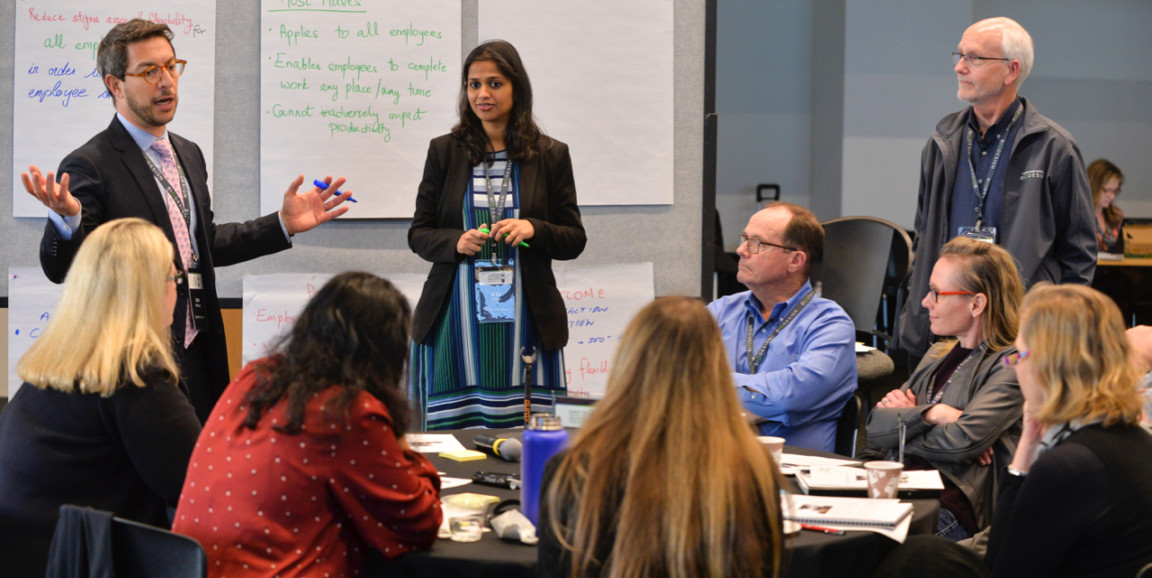Recently, the 2018-19 Stanford Biodesign Innovation Fellows presented their final projects addressing unmet health care needs. Not only were their ideas for new medical technologies inspiring, but the class itself represents a vision for what the Byers Center for Biodesign hopes to achieve in its programs: gender parity. Seven of the 12 fellows in this year's class are female; the highest number in the 18-year history of the program.
Historically, women make up only 28 percent of the innovation fellows, said Paul Yock, MD, director of Stanford Biodesign. After an alumni survey drew attention to these numbers, the center's leadership resolved to make changes.
"Diversity stimulates creativity and innovation by bringing together people with different perspectives and ideas," said Yock. "We cultivate this in our courses and fellowships by having our trainees work in multidisciplinary teams of doctors, engineers, and business people. Now we're focused on addressing diversity more broadly."
Biodesign is also leading efforts to close the gender gap in the larger health technology innovation industry, where women leaders are in short supply. To accomplish this, Yock teamed up with Maria Sainz, a medtech CEO, and Mike Regan, chief innovation officer at the Fogarty Institute for Innovation, a nonprofit medtech incubator. Their goal was to design an event that would engage male and female thought leaders and raise awareness of bias and inequality in the workplace.
Rather than organize a typical conference, Yock came up with a twist. "At Stanford Biodesign our core premise is that a well-characterized need is the DNA of a great solution," he explained. "So we decided to have participants use our biodesign methodology to develop a deeper understanding of the problems around gender in our industry as the first step in developing solutions."
Accordingly, when participants arrived at the recent Summit on Gender in Healthtech Innovation, they were divided into table groups and given a research-based vignette that captured problematic gender dynamics in one of five workplace scenarios: hiring, promotion, company off-site events, fundraising (an essential step to get new technologies to patients), and work schedule flexibility.
Next, guided by Stanford Biodesign alumni and faculty, each group identified the most significant problem within their scenario. They discussed what group was being most affected by the problem, and what outcomes a solution should achieve. The participants also developed a set of criteria that any solution would have to meet in order to be considered a success.
For example, the team working with the corporate off-site scenario framed the problem and desired outcome as "A way to plan and manage key company events for all employees that intentionally fosters an inclusive culture." Their solution criteria included having behavior guidelines set and communicated in advance, and ensuring that all event activities be broadly considered "gender neutral."
Finally, the groups brainstormed solutions, using the criteria they had developed to guide their ideas. With only three hours to solve complex problems, the organizers adopted an approach developed by Stanford sociologist Shelley Correll, PhD, who has researched and written extensively on gender and the workplace. "Correll developed the 'small wins,' model, which is based on the premise that small changes, especially at the institutional level, add up and lead to bigger ones," said Yock.
For the off-site group, their small win solution was to have the company CEO email all employees ahead of time to outline expectations for respectful, inclusive and appropriate behavior, and then attend the event to model this and positively redirect any undesirable behavior.
At the end of the Summit, participants left with ideas for change, and an eagerness to press forward. The team is currently planning a follow-up event, with the ultimate goal of addressing all types of diversity. As for the center itself, Stanford Biodesign has formed a diversity council and is hard at work implementing both small wins and larger solutions.
Photo of Dan Azagury, MD, and Ritu Kamal, facilitating a discussion by Rod Searcey




